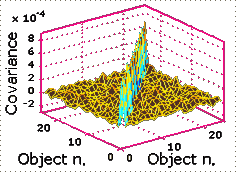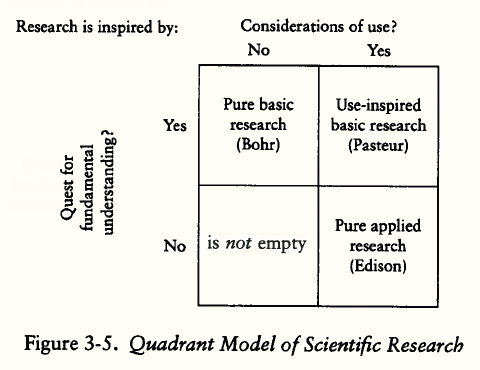- General information
- where the Meeting, the city
- who should attend?, who is interested?
- the Meeting Committees, contacts with organisation
- what we forget?

|

|
This is a small conference, in our view we would like to build a bridge between researchers involved on Cultural Heritage (and restorers) and Environment scientists, better if using statistic, to contribute to solve open problems in those 2 fields.
Our idea of meeting involving researchers, experts, scientist and competent on Measurements , Diagnostics , Sampling , Characterisation , Monitoring , Sensors application , Sensory panel , Probing , Experimental , On-site studies , Evaluation and Audits , Screening , Quantification and of course Statistic applied to Environment and to Cultural Heritage fields.
In order to achieve this purpose we started biennial Meeting in 2006 and from 2010 we established an "inexpensive course; Multivariate Analysis for Novices" to be held in 3 days parallel to CMA4CH. We assume that the participation to the Meeting (and course/school) can be useful to colleagues to better understand the potential of Statistic/Chemometry.
Further information on the meeting place and how to reach the meeting can be found on the following page.
In which quadrant fall the in the Environment and Cultural Heritage fields? Is working in one of these quadrants more prestigious or more expensive? Returning to the beginning of our career if at university we had presented Figure 3.5 which path would we have taken? Some statistics tell us that the third quadrant, lower-left, is the one in which almost all the researches in our 2 fields are falling! But
The lower left-hand quadrant, which includes research that is inspired neither by the goal of understanding nor by the goal of use, is not empty, and the fact that it is not helps make the point that we do have two conceptual dimensions and not simply a more elegant version of the traditional basic-applied spectrum. Indeed, the "prediction" of such a category further validates the framework as a whole. This quadrant includes research that systematically explores particular phenomena without having in view either general explanatory objectives or any applied use to which the results will be put, a conception more at home with the broader German idea of Wissenschaft than it is with French and Anglo-American ideas of science. Research of this type may be driven by the curiosity of the investigator about particular things, just as research in Bohr's quadrant is driven by the curiosity of the scientist about more general things.*
For the Next Edition of CMA4CH we announce to accept also (if very well conducted): confirmatory study, research with negative results and so-called null studies.
 |
| From page 73 of the 1997 book of D.E. Stokes * |
Of course any "quadrant" is accepted if your research is running on the 2 fields. Every analytical technique/method is welcome better if it contains statistic application.
A cultural item was born in the Environment and suffers all the problems related to its natural and overall anthropogenic pollution; so, the environmental conditions play a fundamental ageing or protecting role on Cultural Heritage. As a consequence, any study regarding restoration and/or conservation of artefacts cannot be correctly carried out IF in the past, present and future conservation the Environment is not considered.
Also, everyone who likes to present a theoretical subject on application of statistic to our 2 fields is welcome. More we can do an agreement on a plenary lecture in experimental design applied to these themes.
Aims of the committees job are: a) the control of the scientific quality of the contributions, b) to work for the widest diffusion of the Meeting, c) a careful organisation allowing the presence of the largest number of researchers to the Meeting both as presenters and as audience, d) to look for sponsors and supporters of the Meeting.
Scientific CommitteeThe Scientific Committee of the CMA4CH, measurements, diagnostics, statistics in Environment and Cultural Heritage fields, is composed of honourable scientists of many different Countries. They represent the three main meeting lines (theoretical chemometrics and multivariate analysis, application to environment, application to cultural heritage), but each of them has competence in all the three main topics.
Because we think that young are our future, the Organising Committee is mainly composed by new graduated chemists and scientists and not by "specialised organisers". Excuse us if something should not go in the right direction in the preparation of the meeting. We are learning and, for the next one, on 2022, that probably will held in one other island at ???, we will surely do better.
We have surely forgotten some information that can be useful to anyone who is interested in the Meeting. If you have any suggestion about this, please contact us by .
We are always happy to stay in contact with researchers and participants, and we appreciate your feedback. If you have any comments, suggestions, improvements, or information about additional events-functions that could be added at those pages (or at the Meeting), please contact us at the address above.
* Donald E. Stokes, Pasteur's Quadrant: Basic Science and Technological Innovation, Brookings Institution Press (Washington, USA), 1997, ISBN:0-8157-8178-4
Book preview are available in stokes_pasteurs_quadrant.pdf, we suggest to read the interesting pages 73, 74 and 75.
| Rome University, La Sapienza Mathematical, Physical, Natural Science Faculty Rome, Italy, Europe |
CMA4CH Meeting, measurements, diagnostics, statistics in Environment and Cultural Heritage fields → in the even years of III millennium ← |
Laurea Degree Course of Sciences Applied to Cultural Heritage for Diagnostic and for Conservation |